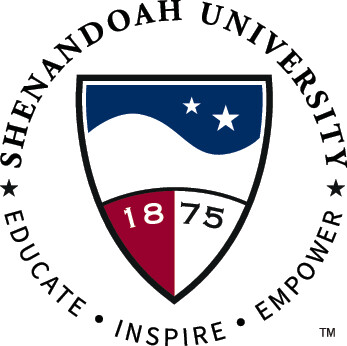Program Details
Bachelor of Science Conservation Science and Management
Bachelor of ScienceShenandoah University
The Bachelor of Science in Conservation Science and Management will be a robust, science-based interdisciplinary program that prepares students to critically evaluate natural resource problems and solutions, as well preserve and manage biodiversity. Successful majors will gain the broad knowledge, analytical skills, hands-on field and laboratory experiences necessary to be informed citizens and effective professionals in their fields.
Program Overview & Guidance

| Program Guidance Element | What You Need to Know |
|---|---|
| Considerations for Selecting Degree | |
| Considerations When Selecting Courses |
|
| Program Requirements Beyond Specific Courses | |
| Doing More With Your Degree | |
| Program Successes & Highlights |
Program Credit Requirements

If you wish to see how your credits may apply, you can:
- Contact the institution where a staff member can help you map your credits to the requirements for this program.
- View the program requirements listed in the institution's catalog.
Applicable Admissions Agreements

The table below lists admissions agreements between Shenandoah University and partner institutions that may guarantee admission to this program if you meet the required criteria. Click on the title name of the agreement to view a summary of those criteria.
You can view the full text of these Agreements in the Resource Center
What If I Have An Associate Degree Or Credit For Prior Learning?

| Transfer Guidance Element | What You Need to Know |
|---|---|
| Associate Transfer Degree Completion | Completion of an Associate of Arts, Associate of Science, or Associate of Arts and Science will guarantee completion of general education requirements. |
Completion of Associate Degree Concurrent with High School | Completion of an Associate of Arts, Associate of Science, or Associate of Arts and Science prior to high school graduation will guarantee completion of general education requirements with the exception that the First Year Seminar (3 credits) must be completed upon enrollment to SU. |
| Credit for Prior Learning | |
| Did You Know That... |
|
College Level Information

| College Fit Guidance | What You Need to Know |
|---|---|
| Is This College Right For Me? | Shenandoah offers an 11:1 student to faculty ratio, experiential learning opportunities, and integrative technology to prepare graduates for a successful career. |
| Transfer Student Catalog Year | Catalog year determined by first semester of attendance |
| First Year Student Catalog Year | Catalog year determined by first semester of attendance |
| Applying for Guaranteed Admissions | Complete an Associate of Science, Associate of Arts, or Associate or Arts and Science with a cumulative GPA of 2.5 or higher |
Where Can This Degree Transfer

| Institution | Title | Degree | Award Name | Award Level | Delivery Mode |
|---|
Careers Where This Degree Applies

| O*Net Code | Name | Description | Parent |
|---|---|---|---|
| 19-1029.01 | Bioinformatics Scientists | Conduct research using bioinformatics theory and methods in areas such as pharmaceuticals, medical technology, biotechnology, computational biology, proteomics, computer information science, biology and medical informatics. May design databases and develop algorithms for processing and analyzing genomic information, or other biological information. | Life, Physical, and Social Science Occupations |
| 25-1042.00 | Biological Science Teachers, Postsecondary | Teach courses in biological sciences. Includes both teachers primarily engaged in teaching and those who do a combination of teaching and research. | Educational Instruction and Library Occupations |
| 19-1029.00 | Biological Scientists, All Other | All biological scientists not listed separately. | Life, Physical, and Social Science Occupations |
| 19-1029.04 | Biologists | Research or study basic principles of plant and animal life, such as origin, relationship, development, anatomy, and functions. | Life, Physical, and Social Science Occupations |
| 19-1031.00 | Conservation Scientists | Manage, improve, and protect natural resources to maximize their use without damaging the environment. May conduct soil surveys and develop plans to eliminate soil erosion or to protect rangelands. May instruct farmers, agricultural production managers, or ranchers in best ways to use crop rotation, contour plowing, or terracing to conserve soil and water; in the number and kind of livestock and forage plants best suited to particular ranges; and in range and farm improvements, such as fencing and reservoirs for stock watering. | Life, Physical, and Social Science Occupations |
| 25-1053.00 | Environmental Science Teachers, Postsecondary | Teach courses in environmental science. Includes both teachers primarily engaged in teaching and those who do a combination of teaching and research. | Educational Instruction and Library Occupations |
| 19-1029.03 | Geneticists | Research and study the inheritance of traits at the molecular, organism or population level. May evaluate or treat patients with genetic disorders. | Life, Physical, and Social Science Occupations |
| 19-1029.02 | Molecular and Cellular Biologists | Research and study cellular molecules and organelles to understand cell function and organization. | Life, Physical, and Social Science Occupations |
| 19-1031.03 | Park Naturalists | Plan, develop, and conduct programs to inform public of historical, natural, and scientific features of national, state, or local park. | Life, Physical, and Social Science Occupations |
| 19-1031.02 | Range Managers | Research or study range land management practices to provide sustained production of forage, livestock, and wildlife. | Life, Physical, and Social Science Occupations |
Cost To Complete


